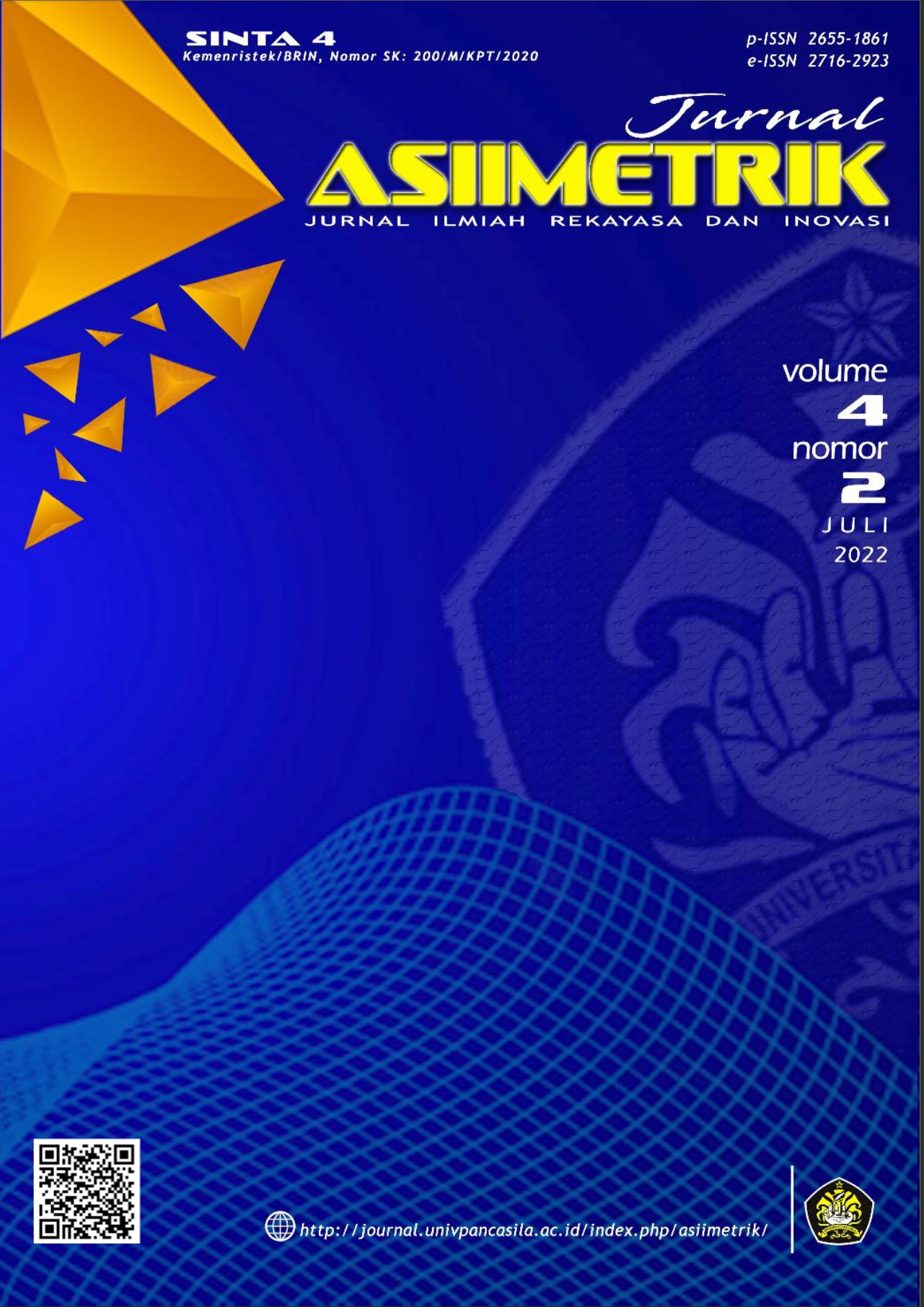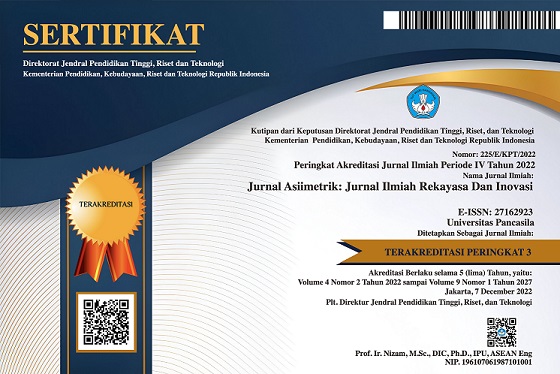Studi Eksperimental Sekam Padi sebagai Zat Campuran pada Komposit Termoplastik untuk Meningkatkan Sifat Isolator
DOI:
https://doi.org/10.35814/asiimetrik.v4i1.3382Keywords:
rice husk, composite, thermal conductivityAbstract
Every year, Indonesia produces a large amount of rice husks. Insulating composites can benefit from the use of rice husks because of their high silica content and low thermal conductivity. The resin composite specimen with fibre and rice husk reinforcing agents is tested for heat insulating properties by insulating the specimen plate. The composite with fibre reinforcement and rice husk ash had the lowest thermal conductivity value of 0.3770 W/m2K, according to the results of the test. To put it another way, ash made from rice husks contains more silica than the husks themselves or the husks that have been milled.
Downloads
References
Al-Noamany, A.H.A., Habieb, A.A.W. dan Alkhayatt, A.H.O. (2020) ‘The particle size effect of rice husk on thermal conductivity and dielectric constant of RTV Silicon rice husk composites’, in Journal of Physics: Conference Series. IOP Publishing, hal. 012060.
BPS, Badan Pusat Statistik (2021) Luas Panen, Produksi, dan Produktivitas Padi Menurut Provinsi 2019-2021. Available at: https://www.bps.go.id/indicator/53/1498/1/luas-panen-produksi-dan-produktivitas-padi-menurut-provinsi.html (diakses: 7 May 2022).
Fatriansyah, J.F., Situmorang, F.W. dan Dhaneswara, D. (2018) ‘Ekstraksi silika dari sekam padi: metode refluks dengan NaOH dan pengendapan menggunakan asam kuat (HCl) dan asam lemah (CH3COOH)’, in Prosiding Seminar Nasional Fisika Universitas Riau ke-3, hal. 123–127.
Handani, S. (2010) ‘Sifat Isolator Panas Papan Sekam Padi dengan Variasi Resin dan Ukuran Partikel’, Jurnal Ilmu Fisika| Universitas Andalas, 2(2), hal. 68–73.
Handayani, P.A., Nurjanah, E. dan Rengga, W.D.P. (2014) ‘Pemanfaatan limbah sekam padi menjadi silika gel’, Jurnal bahan alam terbarukan, 3(2), hal. 55–59.
Holman, J.P. (2002) Heat Transfer. McGraw-Hill Education (India) Pvt Limited [Cetak].
Ismail, M.S. dan Waliuddin, A.M. (1996) ‘Effect of rice husk ash on high strength concrete’, Construction and building materials, 10(7), hal. 521–526.
Meliyana, M., Rahmawati, C. dan Handayani, L. (2019) ‘Sintesis silika dari abu sekam padi dan pengaruhnya terhadap karakteristik bata ringan’, Elkawnie: Journal of Islamic Science and Technology, 5(2), hal. 164–175.
Nurlia dkk. (2020) Mix Sekam Padi, Bonggol Jagung dan Tempurung Kelapa Sebagai Pestisida Alami. CV Jejak (Jejak Publisher) [Cetak].
Prasojo, A., Sulistyo, J. dan Listyanto, T. (2012) ‘Konduktivitas panas empat jenis kayu dalam kondisi kadar air yang berbeda’, in Prosiding Seminar Nasional MAPEKI, hal. 97–101.
Savitri, F.R., Syakur, A. dan Hermawan, H. (2019) ‘Analisis Penambahan Bahan Pengisi Pasir Silika Pada Bahan Resin Epoksi Silicone Rubber Terhadap Parameter Listrik, Mekanik Dan Fisik Untuk Bahan Isolator’, Transient: Jurnal Ilmiah Teknik Elektro, 8(2), hal. 171–180.
Wibowo, H. dkk. (2008) ‘Konduktivitas Termal Papan Partikel Sekam Padi’, Jurnal Teknologi Technoscientia, hal. 29–34.
Zainal, N.S. dkk. (2018) ‘Study of Characteristics of Rice Husk and Silica Obtained from Rice Husk’, International Journal of Chemical Engineering and Applications, 9(5), hal. 158–162.





























